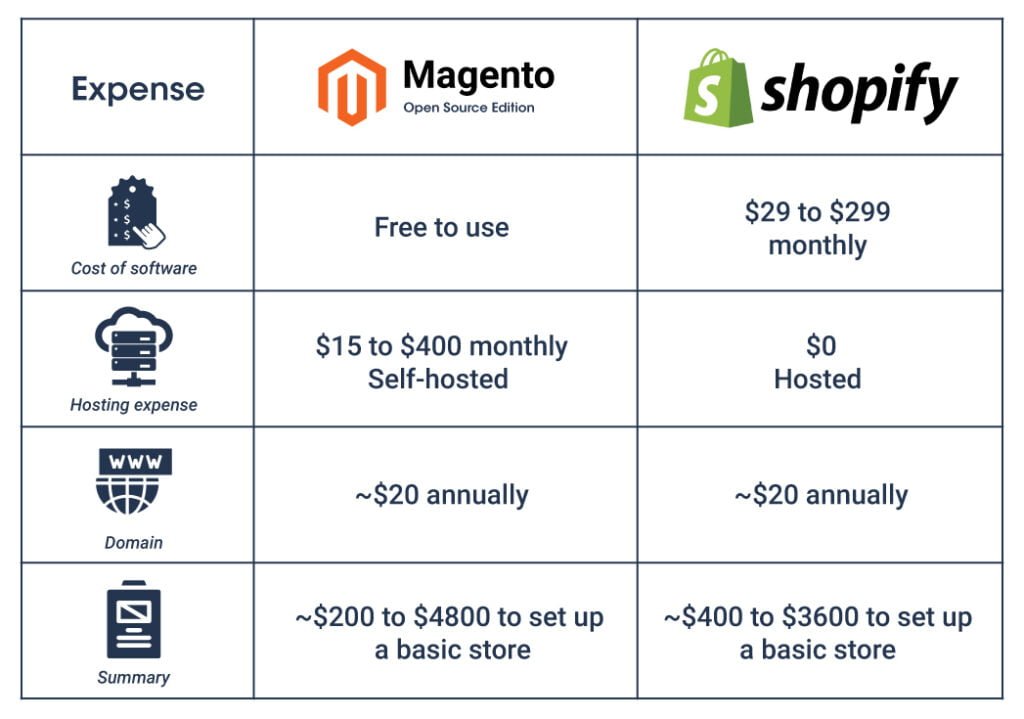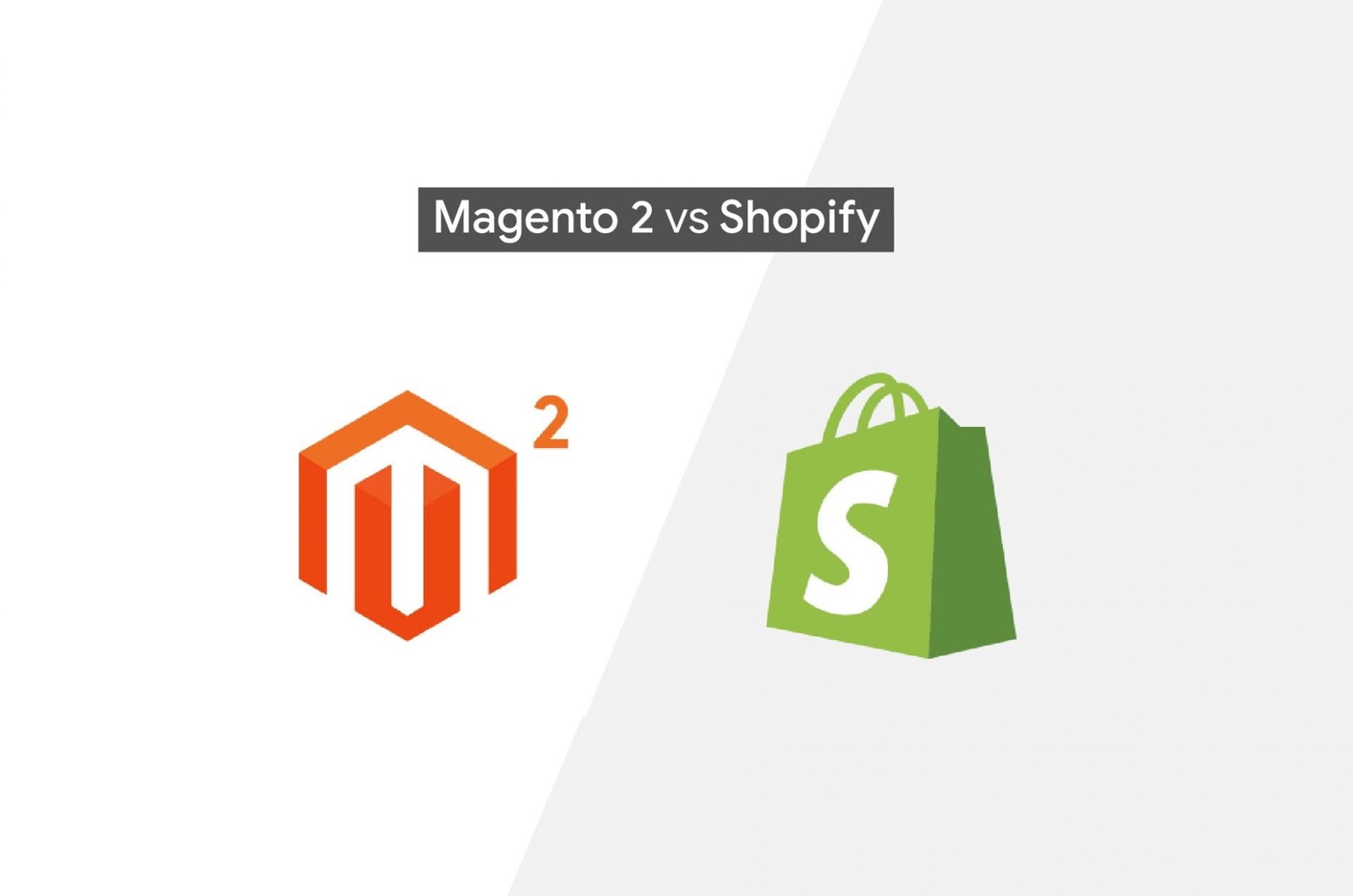Magento 2 vs. Shopify: Exploring the Key Differences
When it comes to eCommerce platforms, Magento 2 and Shopify are two popular choices that offer powerful features and capabilities. Both platforms have their strengths and cater to different business needs. In this blog post, we will delve into the key differences between Magento 2 and Shopify, helping you make an informed decision based on your specific requirements.
-
Hosting and Infrastructure:
One of the fundamental differences between Magento 2 and Shopify lies in their hosting and infrastructure. With Shopify, hosting is fully managed, meaning you don’t have to worry about server maintenance or software updates. On the other hand, Magento 2 is a self-hosted solution, which gives you more control over your hosting environment but requires technical expertise and resources to manage.
-
Customization and Flexibility:
Magento 2 is renowned for its robust customization capabilities. It offers a highly flexible and modular architecture, allowing developers to tailor the platform to meet unique business needs. With access to the source code, Magento 2 provides extensive customization options, making it suitable for larger enterprises with complex requirements.
Shopify, on the other hand, is a hosted platform that offers a more streamlined and user-friendly approach to customization. While it may not provide the same level of flexibility as Magento 2, it simplifies the process for small to medium-sized businesses by offering a wide range of customizable themes and apps from the Shopify App Store.
-
Scalability:
Scalability is a crucial factor when considering an eCommerce platform. Magento 2 excels in this area, as it is specifically designed to handle large catalogs, high traffic volumes, and complex product variations. Its scalability makes it an ideal choice for enterprise-level businesses with expansive product offerings.
Shopify, while still capable of handling significant traffic and product numbers, is generally considered more suitable for smaller to medium-sized businesses. It offers scalability through its various pricing plans, allowing businesses to upgrade as they grow.
-
Pricing and Cost:
Pricing structures differ between Magento 2 and Shopify. Magento 2 is an open-source platform, which means that the software itself is free to use. However, costs are incurred through hosting, development, and maintenance. The total cost of ownership can vary depending on the complexity of customization and technical requirements.
 Shopify operates on a subscription-based model. It offers different pricing plans to cater to businesses of various sizes and requirements. While the monthly subscription covers hosting, updates, and support, additional costs may arise from app purchases and transaction fees.
Shopify operates on a subscription-based model. It offers different pricing plans to cater to businesses of various sizes and requirements. While the monthly subscription covers hosting, updates, and support, additional costs may arise from app purchases and transaction fees.
-
Community and Support:
The Magento 2 community is vast and vibrant, with a wealth of resources, forums, and extensions available. With its active developer community, finding solutions, tutorials, and support for Magento 2 is relatively easy. However, self-hosting means you may need to rely on external resources for technical assistance.
Shopify, as a managed platform, provides comprehensive support and customer service to its users. Their dedicated support team is available 24/7 to address any issues or concerns. Additionally, Shopify offers an extensive knowledge base, community forums, and documentation to assist users.
Magento 2 vs Shopify, Conclusion:
Choosing between Magento 2 and Shopify depends on your business requirements, technical expertise, and budget. Magento 2 offers unparalleled customization and scalability for larger enterprises, while Shopify provides a user-friendly, managed solution for smaller businesses. Consider your specific needs, growth plans, and resources to determine which platform aligns best with your eCommerce goals.








